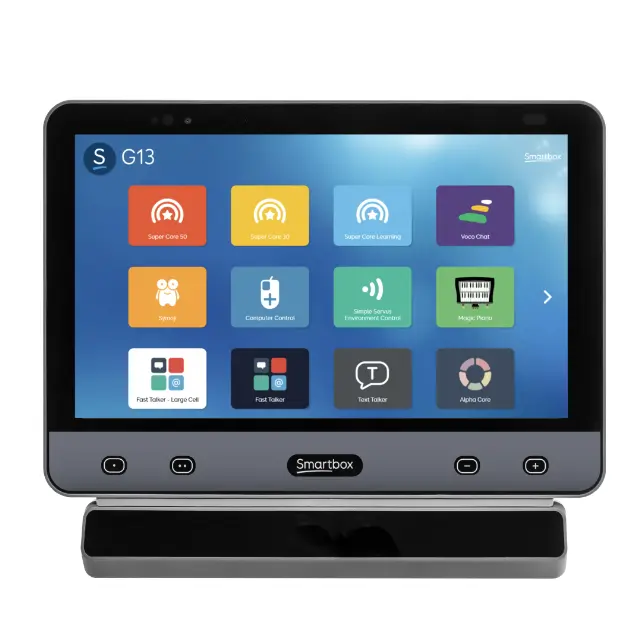Can AAC devices be customized for individual needs?
Exploring the world of AAC devices reveals a realm where customization plays a vital role in meeting individual requirements. Delving into the possibilities of tailoring these devices offers insights into enhancing user experiences and effectiveness.
Step 1: Understanding Individual Needs
AAC devices can indeed be customized to cater to the unique requirements of individuals. By understanding the specific communication challenges and preferences of each user, tailored solutions can be implemented to enhance usability and effectiveness. Whether it involves adjusting language options, voice preferences, or interface settings, the customization possibilities are vast and essential in improving user engagement.
When considering the customization of AAC devices, it is crucial to conduct a thorough assessment of the individual’s communication needs. This involves evaluating factors such as language proficiency, motor skills, cognitive abilities, and sensory preferences. By gaining a comprehensive understanding of these aspects, it becomes possible to tailor the device to match the user’s specific requirements effectively.
Personalization in AAC devices goes beyond just adapting basic settings. It includes customizing vocabulary options, symbol layouts, and communication speed to align with the user’s unique communication style. By analyzing user feedback and observing interaction patterns, continuous customization can refine the device to better meet the individual’s evolving needs over time.
The process of customizing AAC devices begins with a thoughtful consideration of the user’s daily communication scenarios and preferred methods of expression. By incorporating features that resonate with the individual’s personality and communication habits, the device can become a seamless extension of their voice, empowering them to communicate with confidence and clarity.
Understanding the nuances of individual needs is the cornerstone of effective AAC device customization. By listening to the user’s input, observing their communication challenges, and collaborating closely with therapists and caregivers, a personalized system can be designed to support the user’s communication goals and enhance their overall quality of life.
Step 2: Assessing Device Customization Options
Exploring the diverse options for customizing AAC devices involves navigating a landscape of innovative features and functionalities. From selecting suitable communication software to configuring device access methods, there are numerous customization avenues to explore based on the individual’s needs and preferences.
When assessing device customization options, it is essential to consider factors such as the user’s motor skills, visual acuity, cognitive abilities, and sensory sensitivities. By tailoring the device interface, input methods, and feedback settings to align with the user’s capabilities, a more personalized and user-friendly communication experience can be created.
The customization of AAC devices can extend to adapting the device’s physical design to accommodate ergonomic preferences and mobility requirements. Features like adjustable stands, mounting options, and portability enhancements can play a crucial role in ensuring comfortable and convenient device use across different environments and situations.
In the realm of AAC device customization, the integration of third-party apps, cloud services, and connectivity options can expand the device’s functionality and versatility. By incorporating multimedia support, real-time translation capabilities, and remote access features, users can access a wide range of communication tools that cater to their individual needs and preferences.
Step 3: Implementing Customizations Effectively
The effective implementation of customizations in AAC devices relies on a collaborative approach involving users, caregivers, speech therapists, and assistive technology professionals. By fostering open communication and feedback channels, the customization process can be fine-tuned to align with the user’s evolving needs and preferences.
To implement customizations effectively, training sessions and support resources play a crucial role in familiarizing users with new features and functionalities. By offering user-friendly guides, interactive tutorials, and ongoing assistance, individuals can confidently navigate the customized settings and maximize the benefits of their personalized AAC devices.
Accessibility considerations are paramount in the implementation of AAC device customizations. Ensuring that the customized features are intuitive, responsive, and easy to access fosters a seamless user experience and empowers individuals to communicate effectively in various contexts. Regular usability assessments and feedback mechanisms can further enhance the accessibility and usability of customized AAC devices.
Step 4: Ensuring User Adaptation and Satisfaction
User adaptation to customized AAC devices is a dynamic process that requires patience, practice, and ongoing support. By gradually introducing customizations and providing opportunities for users to explore and experiment with new features, individuals can build confidence and proficiency in using their personalized communication tools.
Ensuring user satisfaction with customized AAC devices involves actively seeking user feedback, monitoring usage patterns, and making timely adjustments based on user preferences. By prioritizing user-centered design principles and continuous improvement efforts, the device can evolve to better meet the user’s communication needs and preferences over time.
Celebrating small milestones and successes in user adaptation can boost motivation and engagement in the AAC device customization journey. By recognizing and acknowledging progress, both users and support networks can stay motivated and committed to exploring the full potential of personalized communication solutions for enhanced quality of life.
The Power of Personalization in AAC Devices
In conclusion, the customization of AAC devices opens doors to a realm of personalization and efficiency that can significantly impact the lives of individuals with diverse communication needs. Embracing this personalized approach can lead to greater user satisfaction and improved communication abilities.


